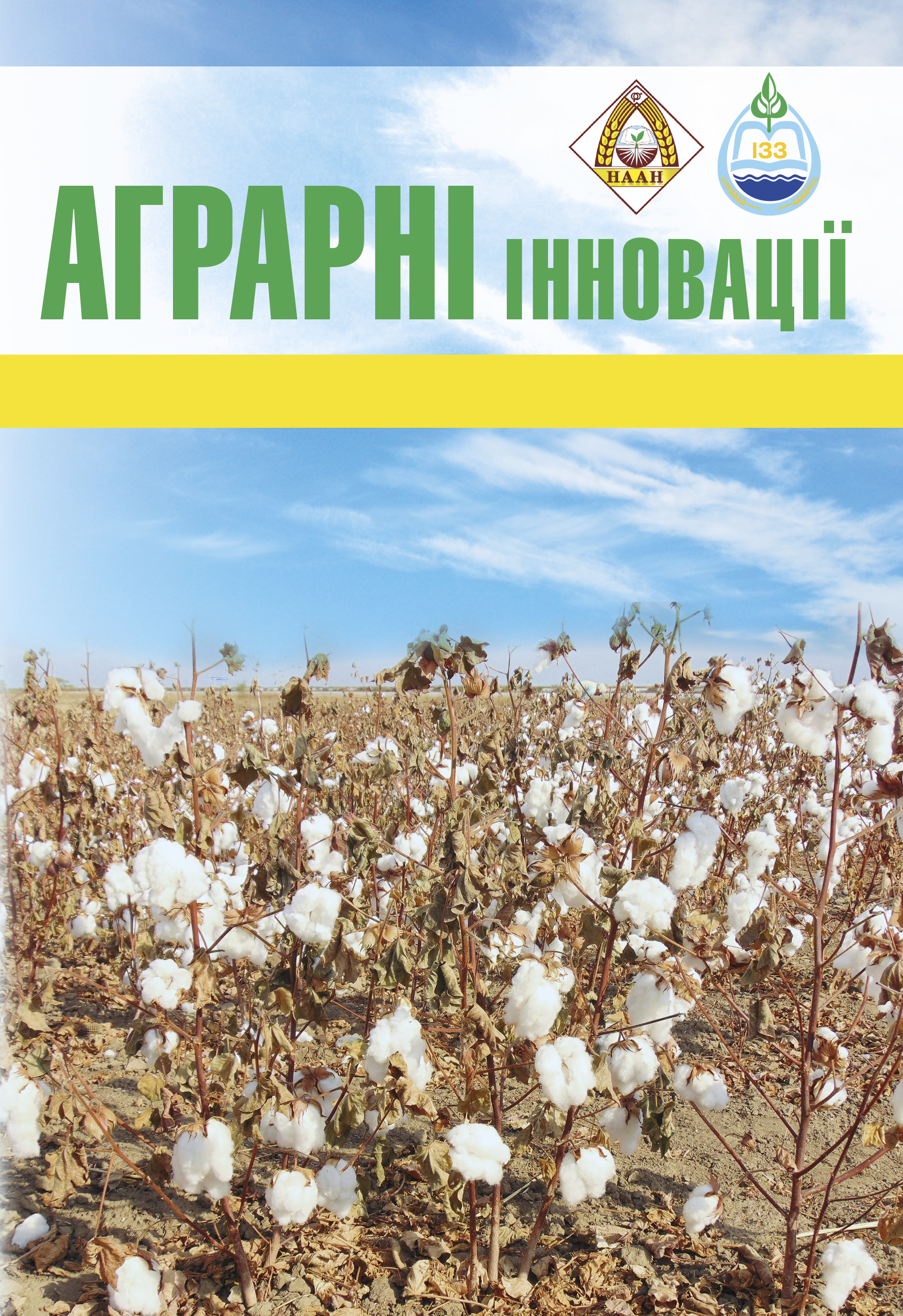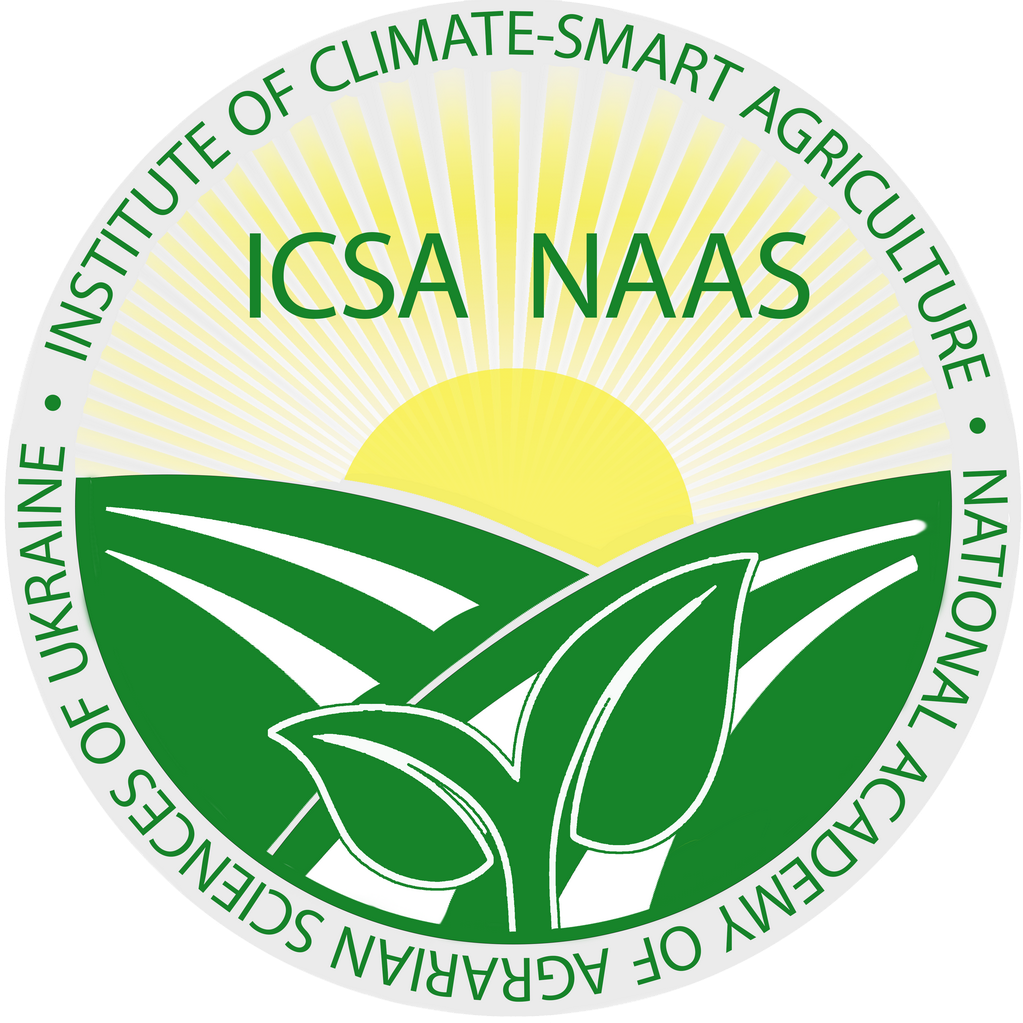Features of the formation of individual productivity of soybean plants under different sowing methods
Abstract
Purpose. To study the influence of the sowing method with different row spacing (15, 30, 45 cm) on the formation of the structure and individual productivity of plants of the Titan, Pallada, Kobuko soybean varieties selected by the Institute of Feed Research and Agriculture of Podilliaof NAAS on gray forest soils in conditions of the Right- Bank Forest-Steppe of Ukraine. Methods. Systematic method, the field one in combination with measuring and mathematical-statistical, trial sheaf method was used in the research. Results. During 2022–2024, the varietal response of soybean varieties Titan, Pallada and Kobuko to the sowing method with different row spacing (15, 30, 45 cm) was established. It was found that the row spacing affected the growth and development of soybean plants, and subsequently, the formation of their individual productivity.In the Titan and Kobuko varieties, the maximum number of beans (38.4 and 39.3 pcs/plant), the number of seeds (84.1 and 68.7 pcs/plant), the mass of seeds (15.4 and 12.8 g/plant) and the mass of 1000 seeds (176.6 and 170.5 g) were observed when sowing in a row method with a row spacing of 15 cm, while in the Pallada variety, the maximum indicators of individual productivity – the number of beans (32.5 pcs/plant), the number of seeds (73.3 pcs/plant), the mass of seeds (11.4 g/plant) and the mass of 1000 seeds (172.2 g) were fixed when sowing in a row method with a row spacing of 30 cm. It should be noted that increasing the row spacing from 15 cm to 45 cm led to a decrease in the level of individual productivity indicators of the studied soybean varieties by 3.5-40.1 %. In addition, it was found that the row spacing affected the mass of 1000 seeds formed in the lower, middle and upper tiers of soybean plants. In the Titan and Kobuko varieties, the maximum mass of 1000 seeds (192.1 and 179.1 g) was formed in the middle tier of plants when sowing with a row spacing of 15 cm. The Pallada variety showed the maximal indicator in the middle tier of the plant (176.2 g), but when sown at a 30 cm row spacings. In the upper and lower tiers, the mass of 1000 seeds was smaller compared to the middle tier, but also depended on the row spacing. Conclusions. Thus, the formation of individual soybean productivity of the Titan, Pallada and Kobuko varieties significantly depends on the sowing method and row spacing. Based on the correlation analysis, strong feedback relationships were established between the number of beans (r = –0.831), the number of seeds (r = –0.687), the weight of seeds (r = –0.700), the weight of 1000 seeds (r = –0.823) and the row spacings.
References
2. Javier de Luca M., Nogueira M. A., Hungria M. Feasibility of Lowering Soybean Planting Density without Compromising Nitrogen Fixation and Yield. Agronomy Journal. 2014. Vol. 106, № 6. P. 2118–2124. URL: https://doi.org/10.2134/agronj14.0234
3. Rebilas K., Bacior M., Klimek-Kopyra A., Zając T. A model for the yield losses estimation in an early soybean (Glycine max (L.) Merr.) cultivar depending on the cutting height at harvest. Field Crops Research. 2020. Vol. 254. P. 107–846. URL: https://doi.org/10.1016/j.fcr.2020.107846
4. Blumenthal M., Quach V., Searle P. Effect of soybean population density on soybean yield, nitrogen accumulation and residual nitrogen. Australian Journal of Experimental Agriculture. 1988. Vol. 28, № 1. P. 99. URL: https://doi.org/10.1071/ea9880099
5. Ball R. A., McNew R. W., Vories E. D., Keisling T. C., Purcell L. C. Path Analyses of Population Density Effects on Short-Season Soybean Yield. Agronomy Journal. 2001. Vol. 93, №. 1. P. 187–195. URL: https://doi.org/10.2134/agronj2001.931187x
6. Kahlon C. S., Li B., Board J., Dia M., Sharma P., Jat P. Cluster and principle component analysis of soybean grown at various row spacings, planting dates and plant populations. Open Agriculture. 2018. № 3. Р. 110-121. URL: https://doi.org/10.1515/opag-2018-0011
7. Петриченко В. Ф., Лихочвор В. В., Іванюк С. В. Соя: монографія. Вінниця: «Діло», 2016. 400 с.
8. Бабич А. О., Сереветник О. В. Ефективність застосу- вання позакореневих підживлень сої. Наукові праці Інституту біоенергетичних культур і цукрових буряків. 2013. Вип. 17. С. 36–41.
9. Нагорний В. І. Залежність продуктивності сої від способу сівби і густоти посіву в умовах північно-східного Лісостепу України. Корми і кормовиробництво. 2008. Вип. 62. С. 173–177.
10. Xinyue Ran, Jianguo Zhou, Tingyong Mao. The Effect of Plant and Row Configuration on the Growth and Yield of Multiple Cropping of Soybeans in Southern Xinjiang, China. Sustainability. 2023. Vol. 15, №. 19. P. 14608. URL: https://doi.org/10.3390/su151914608.
11. Sodangi I. A Effect of intra-row spacing on the yield components and yield of soybean in Kafanchan, Kaduna State, Nigeria. Science World Journal. 2024. Vol. 19, № 3. Р. 684-686.
12. Jańczak-Pieniążek M., Buczek J. Morphophysiology, Productivity and Quality of Soybean (Glycine max (L.) Merr.) cv. Merlin in Response to Row Spacing and Seeding Systems. Agronomy. 2021. Vol. 11, № 2. Р. 403. URL: https://doi.org/10.3390/agronomy11020403.
13. Лемешик А. В. Формування продуктивності сор- тів сої залежно від агротехнічних заходів в умовах Правобережного Лісостепу України: дис. …д-ра філософії: 201. Київ, 2024. 187 с.
14. Каленська С. М., Новицька Н. В. Різноякісність насіння польових культур: монографія. К.: ТОВ «Центр поліграфії «Компринт», 2022. 248 с.
15. Волощук О. В. Урожайні властивості насіння пшениці озимої залежно від місця його формування у колосі. Передгірне та гірське землеробство і тваринництво. 2008. Вип. 50. С. 31-35.
16. Новицька Н. В. Насіннєзнавство: монографія. К.: ТОВ «Центр поліграфії «Компринт», 2023. 90 с.
17. Насінництво і насіннєзнавство зернових культур /М. М. Гаврилюк та ін.; за ред. М. О. Кіндрука; УААН, Селекц.-генет. ін-т – Нац. центр насіннєзнавства та сортовивчення. К.: Аграрна наука, 2003. 238 с.
18. Бабич А. О. Селекція, виробництво, торгівля і використання сої у світі. К.: Аграрна наука, 2011. 548 с.
19. Чорна В. М. Насіннєва продуктивність сої залежно від технічних прийомів вирощування в умовах Лісостепу правобережного. Корми і кормовиробництво. 2016. Вип. 82. С. 69–77.
20. Кобизєва Л. Н. Скринінг колекції сої НЦ ГРРУ за вмістом в насінні білка та жиру. Селекція і насінництво. 2015. Вип. 108. С. 53–60.
21. Січкар В. І., Ганжело О. І., Лаврова Г. Д., Коруняк О. П. Методи, напрямки і практичні результати селекції сої в умовах південного Степу України. Селекція і насінництво. 2005. Вип. 90. С. 35–44.
22. Хорсун І. А., Лаврова Г. Д., Січкар В. І. Цілеспрямований добір батьківських форм для створення нового вихідного матеріалу сої. Селекція і насінництво. 2010. Вип. 15(55). С. 39–51.
23. Кобак С. Я., Чорна В. М. Формування урожайності та якості насіння сої за дії інокуляції та ретарданту: монографія. Вінниця: ФОП Рогальська І. О., 2018. 212 с.
24. Міхєєв В. Г. Фотосинтетична продуктивність сої залежно від способів сівби в східній частині лівобе- режного Лісостепу України. Вісник Центру наукового забезпечення агропромислового виробництва Харківської області. 2014. № 16. С. 138-144
25. Основи наукових досліджень в агрономії /Єщенко В. О. та ін.; за ред. В.О. Єщенка. К.: Дія. 2005. 288 с.
26. Каленська С. М., Новицька Н. В., Гарбар Л. А., Андрієць Д. В. Урожайність як інтегральний показник реакції рослин сої на елементи технології вирощу- вання. Науковий вісник Національного університету біоресурсів і природокористування України: Серія "Агрономія". 2010. Вип. 149. С. 227–234.

This work is licensed under a Creative Commons Attribution 4.0 International License.






